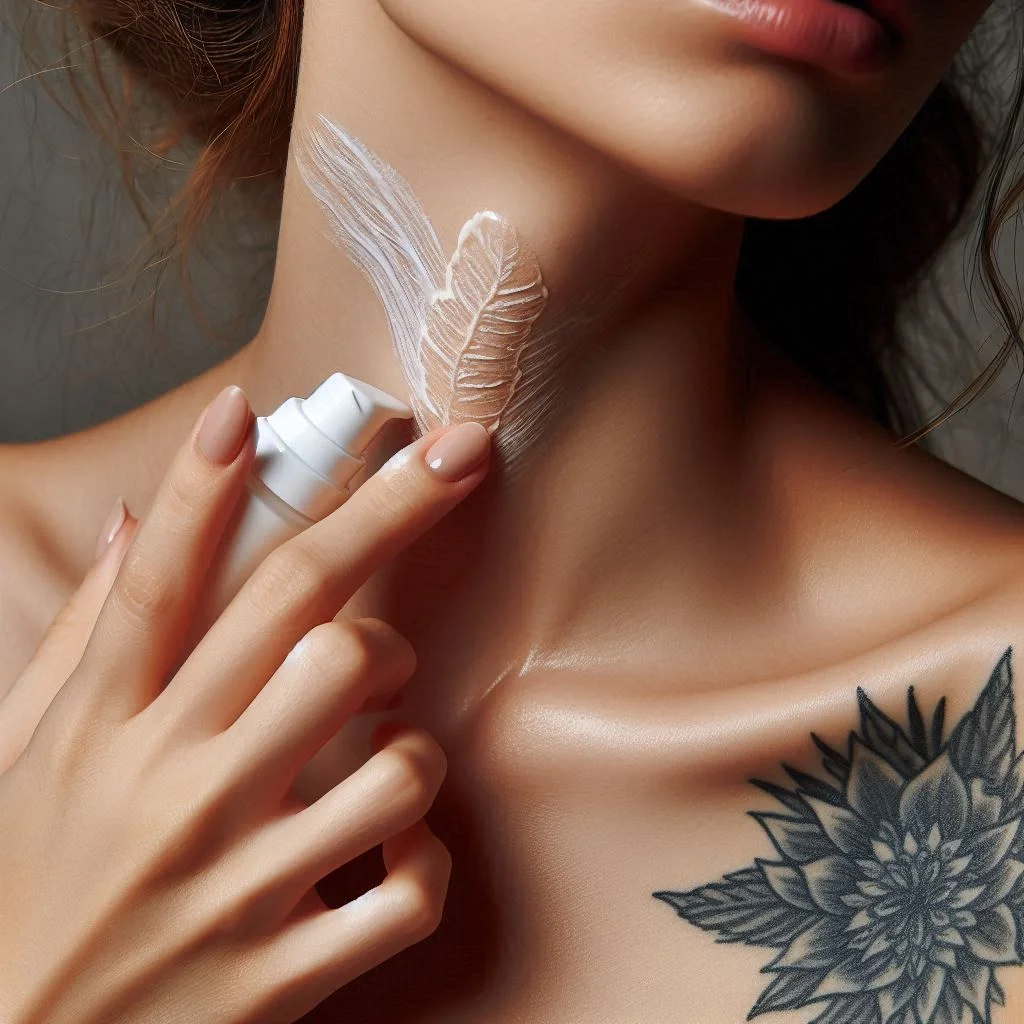Why is good aftercare important for a neck tattoo?
A neck tattoo is a strong statement, but the location leaves it particularly susceptible to irritation, infection, and early fading. The skin on the neck is sensitive, subject to constant movement, rubbing from clothing, and exposure to the elements. Without proper aftercare, your tattoo’s healing process can be prolonged, leading to potential complications that could impact the final result. Whether it’s your first tattoo or an addition to your collection, understanding how to care for it properly will ensure it heals beautifully and lasts a lifetime.
Understanding the Healing Process
How does a neck tattoo heal?

As with any tattoo, a neck tattoo follows a formal healing process. First, your skin responds to the stress of the tattoo needle by developing a protective layer. For several weeks, your skin peels, scabs, and regenerates as it is repairing itself. Because the neck is exposed at all times, healing must be done with special care.
What are the various stages of tattoo healing?
Inflammation (Days 1-3): Redness, mild swelling, and oozing plasma
- Scabbing & Peeling (Days 4-14): Dry, flaky skin can develop, and scabs start to form.
- Regeneration (Weeks 2-6): Skin cells regenerate, and the tattoo becomes part of the skin.
- Full Healing (Months 2-6): Ink completely sets, and colors stabilize.
- Immediate Aftercare: The First 24 Hours
What should you do immediately after getting a neck tattoo?
Your tattoo artist will wrap the tattoo in a protective covering. Leave this on for a minimum of 2-4 hours to keep bacteria out. After removal, clean your tattoo gently with lukewarm water and fragrance-free soap.
How do you clean a new tattoo?
Wash the area gently with clean hands using circular motions. Do not scrub or use rough towels—gently pat the tattoo dry with a soft paper towel.
Should you cover your tattoo or allow it to breathe?
Once the initial wrap comes off, let your tattoo breathe. But if you find yourself in a dusty or dirty environment, do use a light breathable covering such as medical-grade gauze.
Daily Tattoo Care Routine
How frequently should you wash your tattoo?
Clean your tattoo twice a day—once in the morning and once at night. Washing it too much dries out your skin, while not washing it enough puts you at risk of infection.
What kind of soap and lotion do you use?
Use an unscented antibacterial soap. Top it with a light, scent-free lotion for tattoo aftercare.
Do you use ointment or lotion?
Apply a thin layer of tattoo ointment during the first few days, then switch to a tattoo-specific lotion. Too much ointment will clog pores and slow healing.
Common Healing Problems and How to Deal with Them
What do you do if your tattoo is too red or swollen?
Redness and swelling are normal, but too much inflammation may indicate an allergic reaction or infection.Use a cold compress and watch for worsening symptoms.
How do you avoid scabbing and peeling from destroying your tattoo?
Don’t pick at scabs and allow peeling to take its natural course. Regular moisturizing keeps excessive flaking at bay.
Is itching normal, and how do you prevent it?
Itching is unavoidable, but scratching will harm the ink. Gently tap the tattoo area or apply a light coating of moisturizer.
Lifestyle Changes for Quicker Healing
Do you sleep well with a fresh neck tattoo?
Sleep on a fresh pillowcase and do not sleep on your tattoo. Slightly elevate your head to avoid unnecessary friction.
What do you wear to cover your tattoo?
Wear loose, breathable clothing to minimize irritation. Steer clear of high collars and scarves that chafe against the new tattoo.
Do you avoid exercise and sweating?
Excessive sweating can be irritating to a new tattoo. Avoid intense exercise for the initial weeks and keep the site clean.
External Factors That Influence Tattoo Healing
How does exposure to the sun affect a healing tattoo?
Fading and lengthened healing times may result from UV rays. Cover your tattoo or use sunscreen specifically designed for tattoos once fully healed.
Will smoking or drinking delay healing?
Both drinking and smoking can inhibit circulation, hindering your body’s process to heal wounds, such as tattoos.Does hydration and diet affect tattoo healing?
An equally balanced diet that includes a high content of vitamins and proper hydration will speed up the process of skin regrowth, enhancing the healing process.When to See a Doctor
What are signs of a tattoo infection?
Check for excess pus, red spreading, fever, or bad odour. They are signs of infection that antibiotics might need.How do I treat a home tattoo infection?
Clean the tattoo with antibacterial soap and add an antibiotic cream. If a problem continues, consult a medical professional.When do you have to see the doctor for complications from tattoos?
If there’s intense pain, swelling lasting weeks, or funny discharge, report to a doctor at once.Long-Term Tattoo Aftercare
How do you maintain your tattoo’s color over the years?
Moisturize every day, stay out of the sun for extended periods, and touch up as necessary.Do you need to get touch-ups for a neck tattoo?
Neck tattoos fade more easily from friction—consider regular touch-ups to keep them sharp.What are the best sun protection habits for tattoos?
Apply SPF 50+ tattoo sunscreen and cover up with protective clothing when in the sun.Final Thoughts
What’s the most important thing to remember for neck tattoo aftercare?
Careful aftercare helps your tattoo heal nicely, stay colorful, and last an eternity. With these steps, you can care for your investment and have your ink look perfect.Do you wanna know about The Guide to Hand Tattoo Aftercare